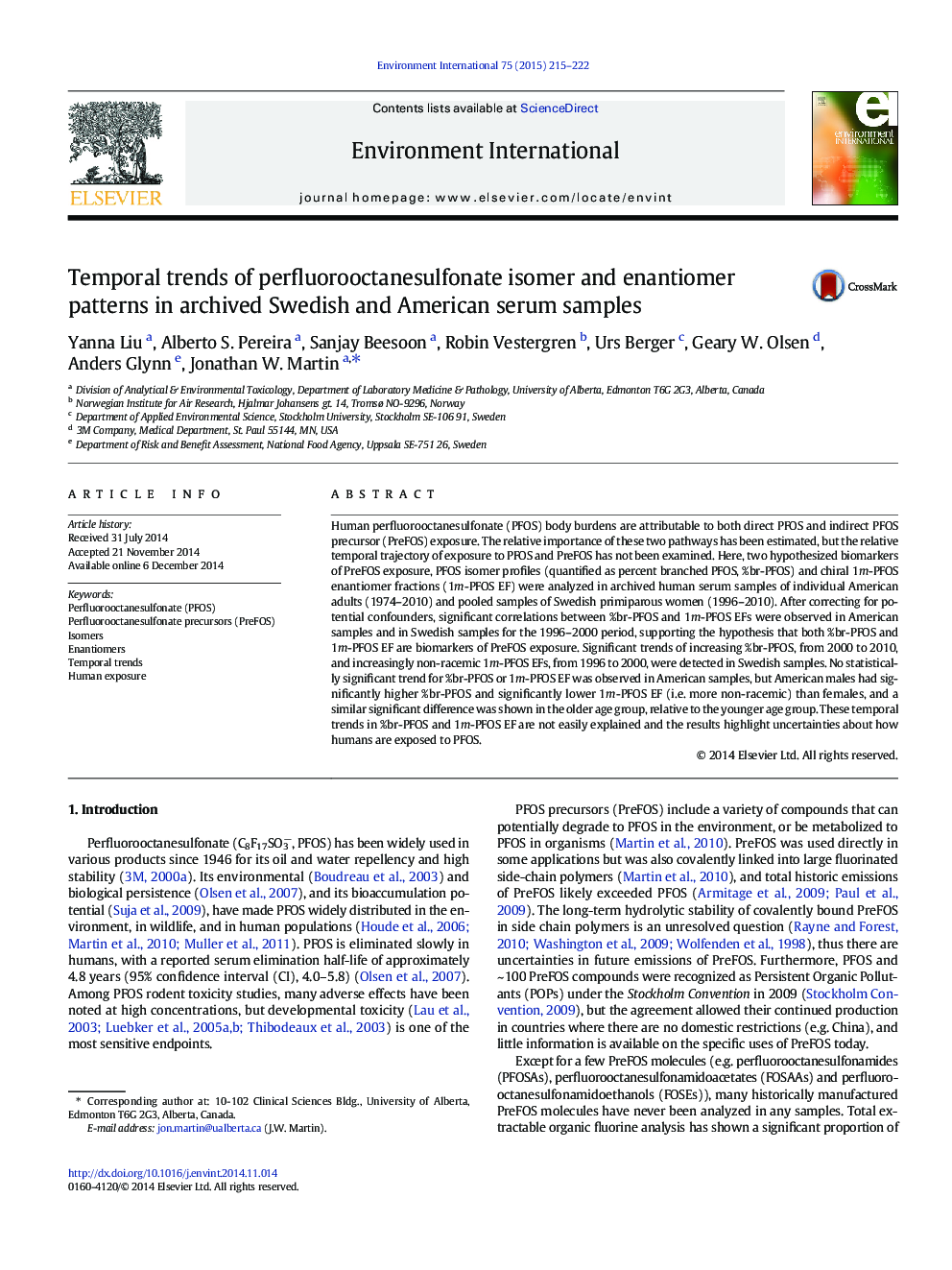| کد مقاله | کد نشریه | سال انتشار | مقاله انگلیسی | نسخه تمام متن |
|---|---|---|---|---|
| 4422710 | 1619053 | 2015 | 8 صفحه PDF | دانلود رایگان |

• Both PFOS isomer and enantiomer profiles were measured in archived human sera.
• Both biomarkers suggested an increase in relative PreFOS exposure in Swedish women.
• Two biomarkers were correlated in Swedes (1996–2000) and in Americans (1974–2010).
• Age and gender differences for both biomarkers were detected in Americans.
Human perfluorooctanesulfonate (PFOS) body burdens are attributable to both direct PFOS and indirect PFOS precursor (PreFOS) exposure. The relative importance of these two pathways has been estimated, but the relative temporal trajectory of exposure to PFOS and PreFOS has not been examined. Here, two hypothesized biomarkers of PreFOS exposure, PFOS isomer profiles (quantified as percent branched PFOS, %br-PFOS) and chiral 1m-PFOS enantiomer fractions (1m-PFOS EF) were analyzed in archived human serum samples of individual American adults (1974–2010) and pooled samples of Swedish primiparous women (1996–2010). After correcting for potential confounders, significant correlations between %br-PFOS and 1m-PFOS EFs were observed in American samples and in Swedish samples for the 1996–2000 period, supporting the hypothesis that both %br-PFOS and 1m-PFOS EF are biomarkers of PreFOS exposure. Significant trends of increasing %br-PFOS, from 2000 to 2010, and increasingly non-racemic 1m-PFOS EFs, from 1996 to 2000, were detected in Swedish samples. No statistically significant trend for %br-PFOS or 1m-PFOS EF was observed in American samples, but American males had significantly higher %br-PFOS and significantly lower 1m-PFOS EF (i.e. more non-racemic) than females, and a similar significant difference was shown in the older age group, relative to the younger age group. These temporal trends in %br-PFOS and 1m-PFOS EF are not easily explained and the results highlight uncertainties about how humans are exposed to PFOS.
Figure optionsDownload as PowerPoint slide
Journal: Environment International - Volume 75, February 2015, Pages 215–222